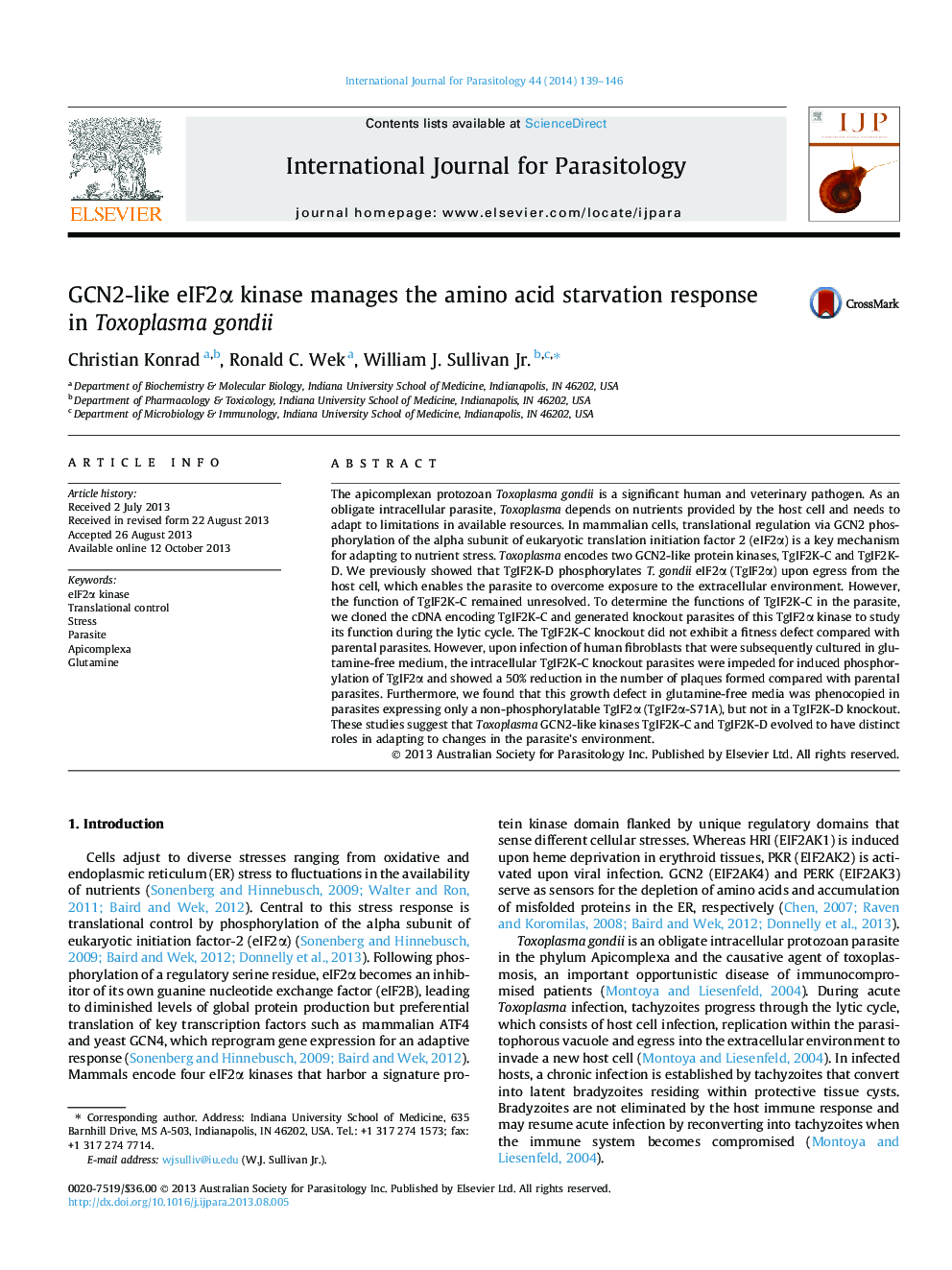| کد مقاله | کد نشریه | سال انتشار | مقاله انگلیسی | نسخه تمام متن |
|---|---|---|---|---|
| 2436094 | 1107273 | 2014 | 8 صفحه PDF | دانلود رایگان |

• A second cytosolic GCN2-like eIF2α kinase was identified in Toxoplasma gondii.
• TgIF2K-C is dispensable for normal tachyzoite replication and virulence.
• eIF2α is phosphorylated by TgIF2K-C in tachyzoite cultures deprived of glutamine.
• Adaptation to glutamine starvation is facilitated by TgIF2K-C.
• Two GCN2-like kinases have distinct functions in the T. gondii stress responses.
The apicomplexan protozoan Toxoplasma gondii is a significant human and veterinary pathogen. As an obligate intracellular parasite, Toxoplasma depends on nutrients provided by the host cell and needs to adapt to limitations in available resources. In mammalian cells, translational regulation via GCN2 phosphorylation of the alpha subunit of eukaryotic translation initiation factor 2 (eIF2α) is a key mechanism for adapting to nutrient stress. Toxoplasma encodes two GCN2-like protein kinases, TgIF2K-C and TgIF2K-D. We previously showed that TgIF2K-D phosphorylates T. gondii eIF2α (TgIF2α) upon egress from the host cell, which enables the parasite to overcome exposure to the extracellular environment. However, the function of TgIF2K-C remained unresolved. To determine the functions of TgIF2K-C in the parasite, we cloned the cDNA encoding TgIF2K-C and generated knockout parasites of this TgIF2α kinase to study its function during the lytic cycle. The TgIF2K-C knockout did not exhibit a fitness defect compared with parental parasites. However, upon infection of human fibroblasts that were subsequently cultured in glutamine-free medium, the intracellular TgIF2K-C knockout parasites were impeded for induced phosphorylation of TgIF2α and showed a 50% reduction in the number of plaques formed compared with parental parasites. Furthermore, we found that this growth defect in glutamine-free media was phenocopied in parasites expressing only a non-phosphorylatable TgIF2α (TgIF2α-S71A), but not in a TgIF2K-D knockout. These studies suggest that Toxoplasma GCN2-like kinases TgIF2K-C and TgIF2K-D evolved to have distinct roles in adapting to changes in the parasite’s environment.
Figure optionsDownload high-quality image (39 K)Download as PowerPoint slide
Journal: International Journal for Parasitology - Volume 44, Issue 2, February 2014, Pages 139–146